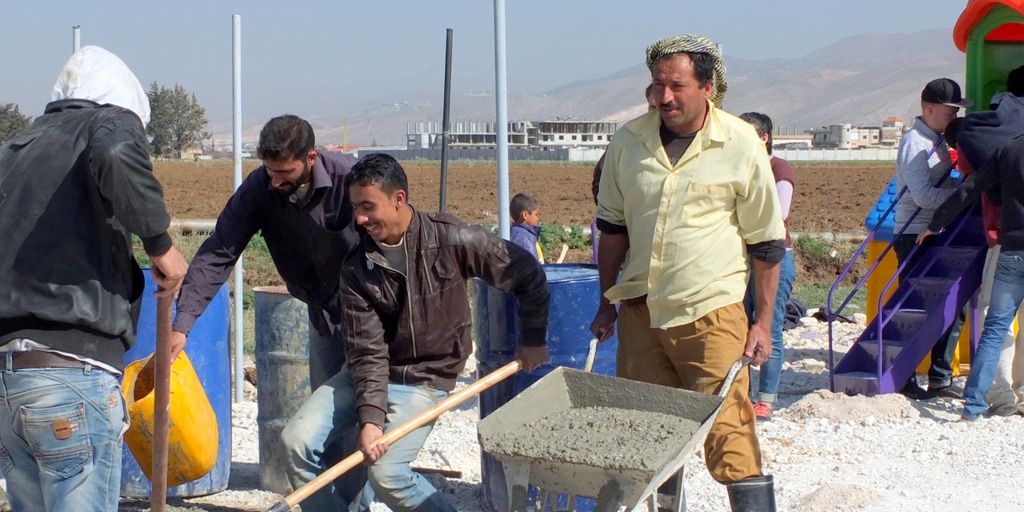|
Children on the Edge generate hope, life, colour and fun in the lives of some of the most vulnerable children across the world. Hope is a fundamental part of this because it enables people to know that things can be different. In turn, this is a catalyst for action within the communities where we work. Living on the edges of society, surviving life in refugee camps and slums, enduring persecution or isolation are all situations that can breed despair and inertia. Sometimes when people see no evidence that things can change, they stop wasting energy believing their situation can be different. Rebecca Solnit describes hope as an axe, rather than a lottery ticket, and says ‘To hope is to give yourself a future, and that commitment to the future makes the present uninhabitable’. In his 1930s ‘Treatise on Hope’, Ernst Bloch says that hope requires people to ‘throw themselves actively into what is becoming, to which they themselves belong’. To us, this speaks very strongly of the importance of hope in sparking community ownership, participation and action. Hope gets people on their feet and inspires them to become actively involved in creating change, instead of resigning themselves to the difficult circumstances they are living through. We have seen this scenario many times in the situations we work, and it’s why generating hope is one of the core elements we focus on. We encourage it through our relational approach, and it is the key to community ownership in our projects. Here are two examples:  In Lebanon, when our partners started working with Syrian refugees in the informal settlements in Bekaa Valley, many people they met had given up. Project Director Nuna Matar described how “Often groups of people would be sitting around doing very little, they didn’t see what they could do to change anything. Big organisations would come and count people rather than talk to them, leave resources that they didn’t need, like electric heaters when they have no electricity. Refugees want to be known as people, not numbers! This doesn’t build hope, they started to sit there powerlessly, wondering what would be dropped off next”. When our partners started to talk to people about education for their children, some of the men said ‘Are you going to build us a school?’, so the team put the question back to them. ‘Are you going to build a school?’. After a long time of believing nothing could change, they had lost motivation, but the team here built relationships with them, encouraged them and worked alongside them. The fathers became instrumental in the construction of schools, and later on even the building of a new refugee camp. The women are fully involved in the education programme, many being trained as teachers and instigating their own literacy classes. The children have been engaged in designing the camp, they especially liked helping out with building the play area! We are now supporting the education of 500 Syrian refugee children, whose aspirations are rising, as are those of their community.  One year ago in Uganda, when we visited Loco slum the people there said they had no hope. Unemployment and income poverty here has left households vulnerable and their children are prone to exploitation, malnutrition, physical and sexual abuse. The Chairman of our Child Protection Team (CPT) in Loco, said “People here have had many organisations come and start things and then go, promise things and then disappoint, they didn’t believe things could change”. Using the CPT model means that work here is totally owned by the community. Babra is a social worker for COTE Africa, she describes how “ The community participate from the start. They identify the problems, they identify the solutions”. Ten local people are trained up to work in their area as part of the CPT, to educate people about child protection and support them to create a protective environment. These people are volunteers, and all the work they do is out of dedication to their community. As the people they work with start to see that things can change, it encourages them to take more action. A year on we have the full participation of local people, not only the CPT volunteers but also parents getting involved with education, mothers creating new businesses to pay for their children to go to school and local services engaging with the Loco community to create a better environment for children. The Chairman now describes how “People see workshops, they see a team that deals with their problems, they see a drop in domestic violence and crime, they see their children on a playscheme and a new Early Childhood Development Centre being built, and it gives them hope. These things have never happened in Loco. Hope is knowing things can change”. These are just two examples of how hope brings action in our work, but if you visited any one of our projects you would see the same values. Thank you for your support in generating hope and bringing change in the lives of children living on the edge.
Read our earlier blog: 'What do we mean when we talk about hope?' Support usComments are closed.
|
RECEIVE OUR EMAILSBlog Categories
All
Archives
July 2024
|
|
JOIN US ON SOCIAL MEDIA
|
Annual Report | Contact Us | Jobs | Media Centre | Resources | Shop
Accessibility & Policies: Accessibility | Equity, Diversity & Inclusion Policy | Complaints| Privacy Policy | Safeguarding
Accessibility & Policies: Accessibility | Equity, Diversity & Inclusion Policy | Complaints| Privacy Policy | Safeguarding
Children on the Edge, 5 The Victoria, 25 St Pancras, Chichester, West Sussex, PO19 7LT, UK | 01243 538530 | [email protected]



 Give monthly
Give monthly Fundraise for us
Fundraise for us RSS Feed
RSS Feed
